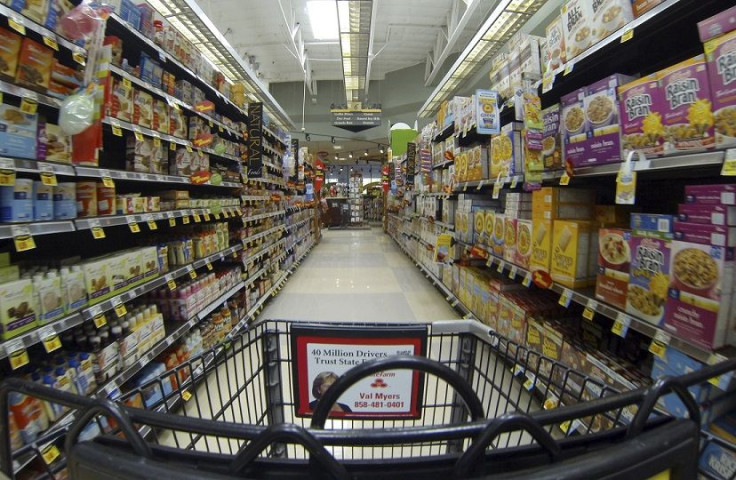A Healthy Diet Is More Expensive Than An Unhealthy One: Study

While cooking at home is cheaper than going out to restaurants, not all home-cooked meals are alike. A new study shows shopping for healthier foods at the grocery store is more expensive than picking out unhealthier foods, by an average of about $1.50 more per day. Those little costs can add up to a big burden for poor families.
“Conventional wisdom has been that healthier foods cost more, but it's never been clear if that's actually true or exactly how much more healthier foods might cost,” Mayuree Rao, an epidemiology researcher at Harvard University’s School of Public Health, wrote in an email. “We found that the healthiest diets cost about $1.50 more per day, and that's less than we might have expected.”
In a paper published Thursday in the British Medical Journal Open, Rao and her colleagues performed a “meta-analysis” – a study of studies – looking at prices of healthy diets versus unhealthy ones. The team examined 27 studies that included comparisons of food prices at stores in places like California, South Carolina, Missouri, and Cape Town, South Africa, as well as dietary studies that looked at how much people spent on their food (with an eye on healthy and unhealthy dietary trends). The team looked at price differences between healthy and unhealthy foods from a variety of angles: per serving, per 200 calories for certain kinds of food, per day, and per 2,000 calories (the recommended daily average intake espoused by the U.S. Department of Agriculture).
Overall, they saw that healthier diets – ones with a lot of fruits, vegetables, nuts and fish – are significantly more expensive than unhealthy diets with an emphasis on processed foods, refined grains, and meats.
“I think an important question to consider is what does an extra $1.50 actually mean?” Rao says. “For many low-income families, it means quite a lot. It translates to about $550 more per year for one person, and that could be a real barrier to healthier eating. On the other hand, $1.50 is about the price of a cup of coffee - just a drop in the bucket when you consider the billions of dollars spent every year on diet-related chronic diseases like obesity, diabetes, and heart disease.”
Rao noted that their analysis was limited to studies that looked at food prices in supermarkets. It would be interesting to look at price differences among restaurants in a future study. Also, the studies the team looked at are all from high-income countries; more information is needed on the prices of healthy and unhealthy foods in lower-income countries, she says.
Another question that remains is exactly why unhealthy diets are cheaper. Rao and colleagues don’t think the root cause is farm subsidies for commodities like corn and soy. Economic studies, they say, show that those subsidies mostly just transfer income to farmers without influencing retail prices too much. The real causes may lie with protectionist tariffs that raise retail prices, and with decades of agricultural policies that have favored production and sale of highly processed food products for maximum product.
“Other research from our group has found that subsidizing healthy foods and taxing unhealthy foods are evidence-based ways to address the price imbalance and nudge people towards a healthier diet,” Rao says. “When you consider the long-term health and financial impact, it's a good investment.”
SOURCE: Rao et al. “Do healthier foods and diet patterns cost more than less healthy options? A systematic review and meta-analysis.” BMJ Open published online 5 December 2013.
© Copyright IBTimes 2025. All rights reserved.





















